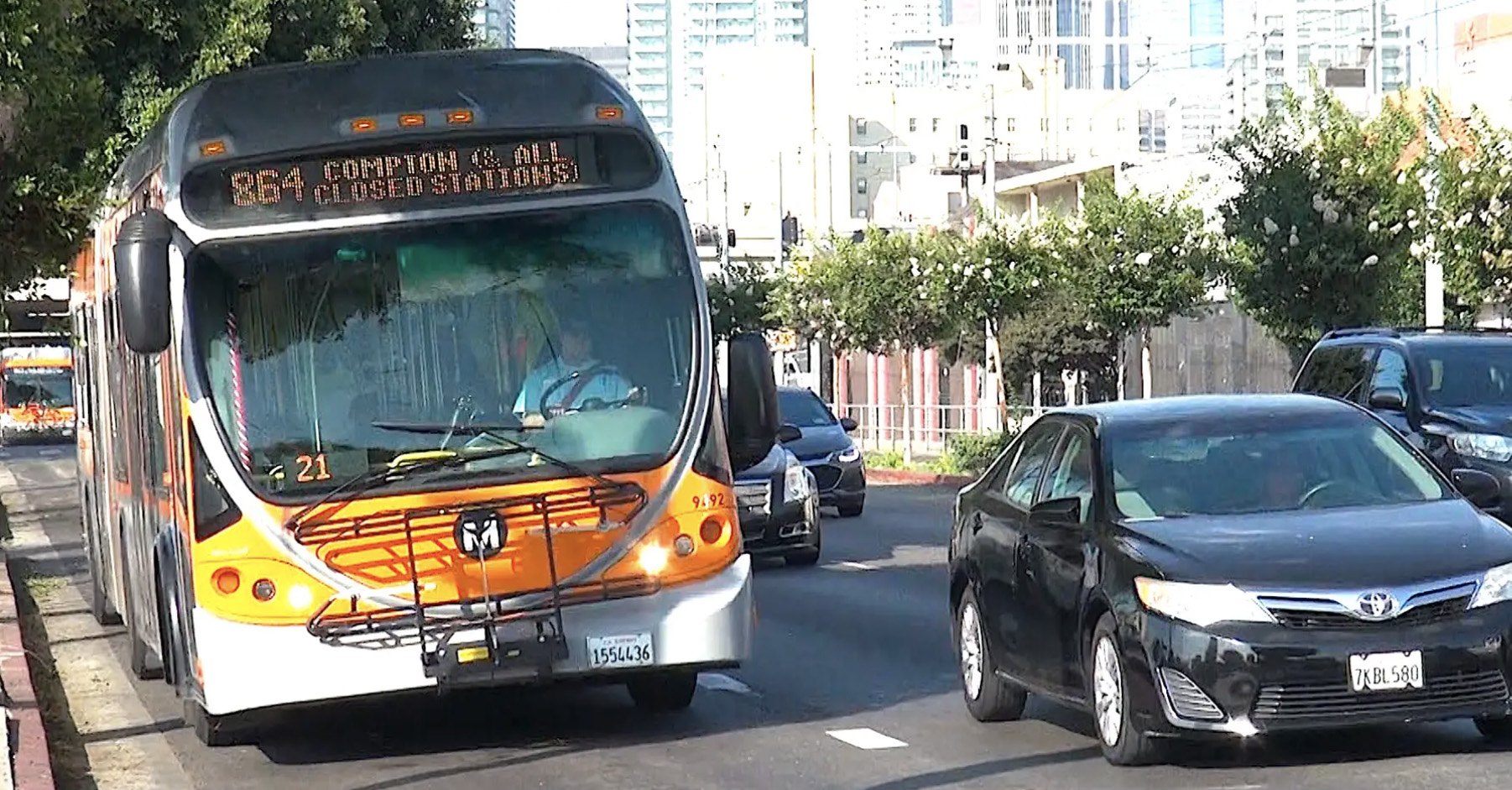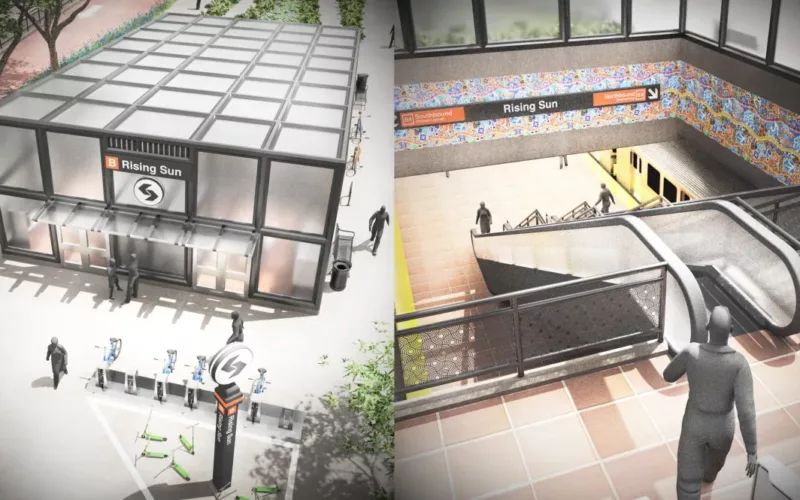
Slow, unreliable bus service is a major problem for transit riders in Los Angeles. Since 1994, average LA Metro bus speeds have dropped more than 12 percent. Bus riders account for nearly three-quarters of all LA Metro fixed-route transit trips, but bus ridership is steadily falling.
While LA has a few bus lanes, they are sparse, and implementation has typically proceeded at a snail’s pace. For a city where so many residents ride buses bogged down in traffic — and whose mayor, Eric Garcetti, now leads the global coalition of “climate mayors” — bus lanes should be much more extensive.
Over the summer, LA transit riders caught a glimpse of what a more urgent approach to prioritizing bus service can do. With a large section of the Blue Line light rail shut down for rehabilitation, LA Metro and LA DOT, encouraged by LA Councilmember Mike Bonin, quickly implemented a 1.8-mile bus lane segment on Flower Street to speed trips for as many as 70 southbound buses per hour during the evening rush.
The bus lane transformed a frustrating slog into satisfying service, shaving time off bus trips and substantially improving reliability. Even with light rail repairs wrapped up and trains back in service, Flower Street remains a major bus corridor, and officials are evaluating whether to make the bus lane permanent.
Beyond Flower Street, LA Metro and LA DOT are in the early stages of planning a more comprehensive bus lane network. As Tafarai Bayne, chief strategist with CicLAvia, explains in this Streetfilm, riders on major bus streets like Vermont and Western urgently need dedicated transit lanes too. One of the lessons of Flower Street is that faster implementation of bus priority projects is possible, providing a template for accelerating bus lane rollout throughout the transit network.
In this Streetfilm, advocates, agency officials, and Councilmember Bonin discuss how the Flower Street approach could translate to faster bus service on other streets in and around Los Angeles.
 On the Brink: Will WMATA’s Progress Be Erased by 2024?
On the Brink: Will WMATA’s Progress Be Erased by 2024?
The experience of being a WMATA rider has substantially improved over the last 18 months, thanks to changes the agency has made like adding off-peak service and simplifying fares. Things are about to get even better with the launch of all-door boarding later this fall, overnight bus service on some lines starting in December, and an ambitious plan to redesign the Metrobus network. But all of this could go away by July 1, 2024.
Read More To Achieve Justice and Climate Outcomes, Fund These Transit Capital Projects
To Achieve Justice and Climate Outcomes, Fund These Transit Capital Projects
Transit advocates, organizers, and riders are calling on local and state agencies along with the USDOT to advance projects designed to improve the mobility of Black and Brown individuals at a time when there is unprecedented funding and an equitable framework to transform transportation infrastructure, support the climate, and right historic injustices.
Read More